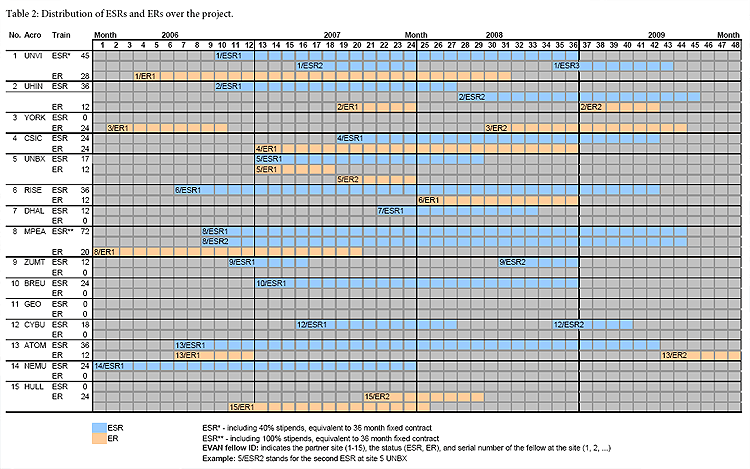Training Opportunities
1. Fellows at UNVI will be trained in:biometrical methods and in new developments of advanced morphometrics and biostatistics (surface&volume data, missing data, deformations, integration of categorical data with geometrical data, extensions to semilandmarks), characterisation of growth in living humans, paleoanthropology, age and sex determination, data-guided reconstruction of specimens, and electronic preparation.Add. regular teaching:
|
2. Fellows at UHIN will be trained in:
Medical image data acquisition, segmentation, analysis and
visualization, functional image analysis, image registration, image
fusion and fusion with other physiological data (e.g.
electrophysiological signals), biosystems analysis, especially
modelling and computer simulation studies, fluid dynamics in vessels,
3D reconstructions, preoperative planning, postoperative quality
control, implementation of GMM methods in cardiac, brain and lung
imaging
Add. regular teaching:
- Medical imaging methods for biologists and anthropologists
- Image-guided diagnosis and therapy
- Physics of CT: Ultrasound, Medical Imaging and Image Processing
- Data Fusion of Multimodal Images
- Biomechanics and biofluid mechanics
- Modelling and simulation in medicine
- Biosystems analysis
3. Fellows at YORK will be trained in:
Applications of GMM to Palaeoanthropology and medicine, 3D reconstruction, anatomy model building and skeletal biomechanics and imaging.Add. regular teaching:
- Avanced level course in Human and Primate Evolution
- Human morphology and Anatomy
4. Fellows at CSIC will be trained in:
Methods and tools in histology of bone surfaces, paleohistological image analysis, light and electron microscopy, high resolution cast preparation, standard morphometrics, principles in craniofacial biology (growth and development), evolutionary anatomy, paleoanthropology.Add. regular teaching:
- Doctorate courses on Evolution and Paleoanthropology at universities UCM; UAM, Granada, Sevilla
5. Fellows at UNBX will be trained in:
biometrical methods (cephalometry based on cranial nerves, dental age assessment and quality estimation, clinical applications), quantification of variability in cranial growth and development in living humans and chimpanzees, biostatistical methods and analysis, electronic preparation.Add. regular teaching:
- Human Osteology
- Paleoanthropology
- Methods (statistics, medical imaging, morphometry, age and sex determination)
- Comparative Anatomy
6. Fellows at RISE will be trained in:
Functional morphology and evolution of mammalian dentitions, quantification of occlusal patterns, functional 3D-analysis of occlusion and jaw movement in living humans and fossil hominids, 3D-surface data acquisition, processing and analysing, paleoanthropology and paleoecology, physical preparation of specimens and high resolution molding techniques
7. Fellows at dHAL will be trained in:
orthodontics (growth and development, diagnostic methods, treatment planning and prediction, surgical treatment prediction) and development of software for diagnostic, research and educational purposes MS-Windows operating system) under special consideration of user-friendly intuitive interfaces. dHAL has close ties to the University of Athens where trainees can gain a better understanding of the clinical needs for the toolbox.Add. regular teaching:
- Orthodontics for undergraduate and postgraduate Dental Students
- Introductory course in Dental Informatics
8. Fellows at MPEA will be trained in:
Human and primate evolution, genetics and primate ecology and behaviour; Evolution of brain and life history; Application of advanced morphometrics methods (semilandmarks, surface and volume analysis, data reconstruction, integration of categorical data with geometrical data) to problems in paleoanthropology; Dental histology; Reconstruction of specimensAdd. regular teaching:
- Human Paleontology and Prehistoric Archaeology
- Comparative Primatology
- Evolutionary Genomics / Ancient DNA
- Molecular Anthropology
9. Fellows at ZUMT will be trained in:
Rapid prototyping, Sterolithography, design appraisal, reproducible models, fit and function tests, application of models in the medical field (e.g. craniofacial surgery), plastics engineering, mould making for series production, vakuum casting, professional exhibition configuration and layout
10. Fellows at BREU will be trained in:
optical 3D-metrology, acquisition and visualisation of 3D surface data and its advantages and limitations, determination of landmarks and biometrical measures from surface scans of the human face and body, software development, dissemination of R&D results into commercial applications and products.
11. Fellows at GEO will be trained in:
Courses (three or five days) will focus on writing and presenting skills necessary for the communication with the broad, non-expert public and especially with journalists (e.g. at press conferences). For this goal GEO can make use of established connections with two journalistic training institutions: the prestigeous "Gruner + Jahr Journalistenschule" and the "Deutsche Akademie für Publizistik" (both with their headquarters in Hamburg). Additionally a course in TV publishing can be organized in cooperation with ARTE, one of Europes finest TV channels, and the leading German public channel ARD.- fundamental skills not taught at any University to any researcher.Add. regular teaching:
- Journalism courses
12. Fellows at CYBU will be trained in:
methods and methodology of programming in a commercial environment, own methods for very high performance pattern matching, statistical methods, project management, robust code development, and coding-team integration. AURA technology's for use in archival, and searching of very large complex data sets.Add. regular teaching:
- Regular training courses for the use of AURA software for image analysis and recognition tasks and other compny-related technologies
13. Fellows at ATOM will be trained in:
Brain neuro-imaging, standard and advanced methods for morphometry of structural images of the human brain, use of MR diffusion imaging to study brain connectivity, characterisation of the cortical folding process from foetus to adult stages, inference of landmark models, computer vision, image analysis, machine learning for automatic diagnosis, software development.Add. regular teaching:
- Brain Imaging (acquisitions, analysis, neurosciences)
14. Fellows at NEMU will be trained in:
Use of NESPOS and its standard tools, data standardisation problems, data input to the archive, administration of large public data base, realisation of exhibitions for a broad public, dissemination of results at a website (Neanderthal Museum), dissemination of tool boxes, analysis dental sequences, count and packing of Retzius lines and perikymata, paleoanthropology
15. Fellows at HULL will be trained in:
Visualization and haptic interaction, virtual environments, geometric modelling, surface scanning and volumetric capture, image analysis,Add. regular teaching:
- Visualisation and Virtual Environments
- Computer Games Development

